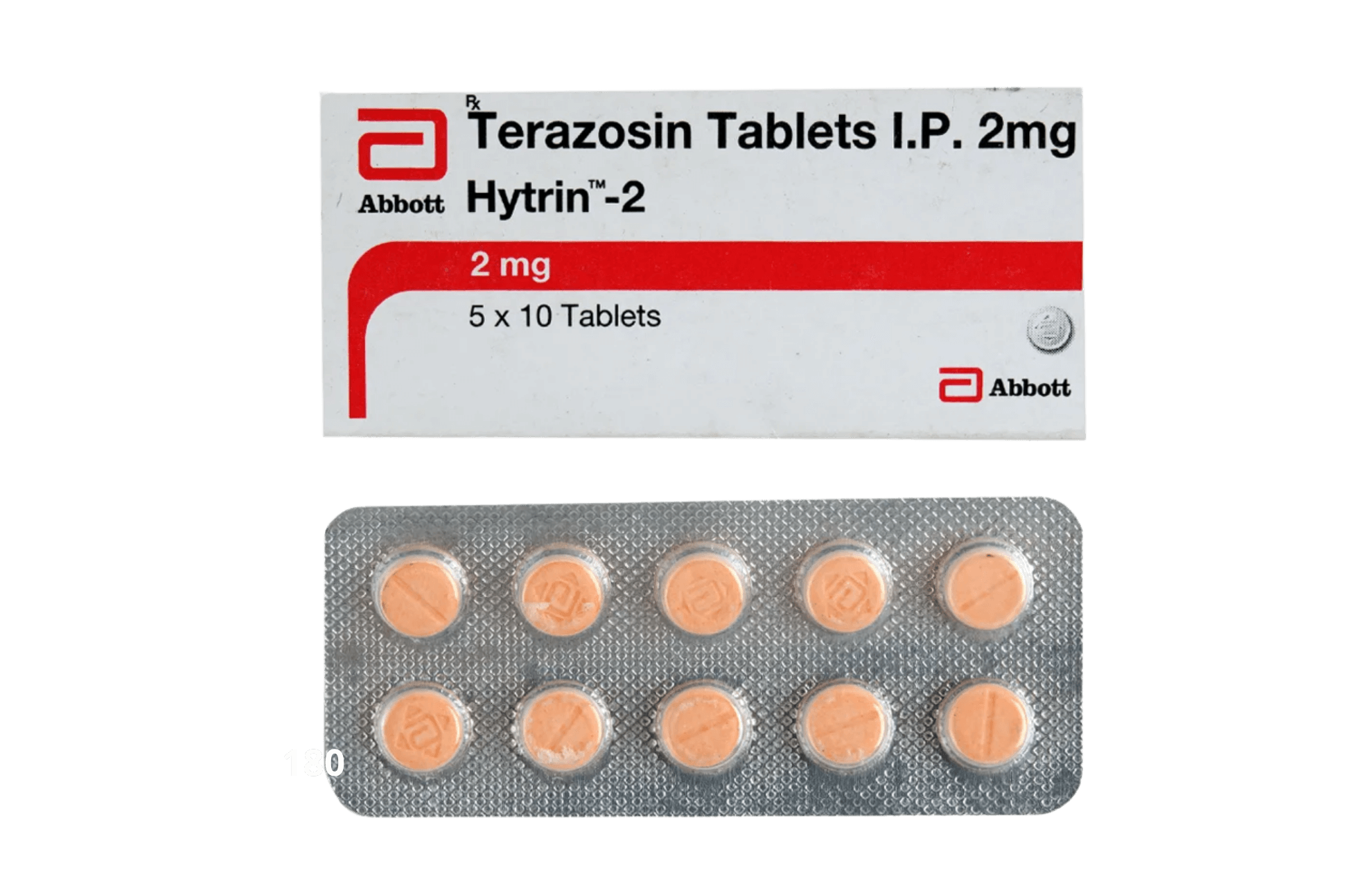Hytrin (generic name: terazosin) is prescribed to treat two common conditions: high blood pressure (hypertension) and benign prostatic hyperplasia (BPH), also known as prostate enlargement.
Terazosin belongs to a group of medicines called alpha-blockers, which help relax smooth muscles in the body. In individuals with high blood pressure, alpha blockers, such as Hytrin, relax blood vessels, allowing blood to flow more easily and reducing pressure on the heart. In men with BPH, it relaxes muscles in the prostate and bladder neck, which makes it easier to urinate.
Hytrin does not shrink the prostate; instead, it helps relieve pressure caused by muscle tightness. It can be used long-term but requires regular doctor visits to check blood pressure and monitor for side effects.
Caution:
People using Hytrin may experience fatigue or dizziness, especially when standing up quickly. To help manage this, it’s best to rise slowly from sitting or lying down.
Dosage
It is essential to follow the dosage instructions printed on the label of the box.
Treatment is often started at a low dose to prevent sudden drops in blood pressure. The first dose should be taken at bedtime, as dizziness or light-headedness may occur when standing up. Doctors gradually increase the dose depending on how well it works and how the body responds. The same precaution of taking the tablet at bedtime should be observed for a few days when the dose has been increased.
For high blood pressure, treatment typically begins with 1 mg at bedtime, then increases gradually, often doubling every week, to a maintenance dose of 2–10 mg once daily, depending on the response.
For BPH, dosing typically begins at 1 mg at bedtime, gradually increasing to 5–10 mg daily based on symptoms.
Tablets should be taken at the same time each day with water. If a dose is missed, it should be taken as soon as remembered, unless it’s nearly time for the next dose, in which case it should be skipped. Never take two doses at once to make up for a missed dose.
If doses are missed for a few days, treatment should be restarted at 1 mg to avoid side effects.
Storage
Hytrin tablets should be stored at room temperature (59–86°F / 15–30°C), away from direct sunlight and moisture. Keep them in their original container, tightly closed.
This text is for informational purposes only. Please consult a doctor or pharmacist before using any medication.
Read the information leaflet that comes with the medication.
If a sudden allergic reaction (anaphylaxis) occurs shortly after taking Hytrin, with symptoms like swelling of the face, tongue, or throat making it difficult to breathe or swallow, or there is wheezing, hives, rash, blistering, or peeling of the skin, call a doctor or 911 right away, or go to an emergency room immediately.
Most people who use Hytrin do not experience any adverse side effects. Doctors prescribe this medication because they assess the benefits of such treatment outweigh any likely unwanted effects.
Some of the side effects that have been reported include dizziness, light-headedness, tiredness, headache, swelling of hands or feet, nausea, and blurred vision. These often appear when starting treatment and usually improve as the body adapts. To help prevent them, the first dose should be taken at bedtime, and patients are encouraged to move slowly from sitting or lying down
Not all side effects are listed here. If these or other unlisted symptoms persist or worsen, consult a healthcare provider or pharmacist.
Hytrin is used to treat high blood pressure, where it lowers pressure by relaxing blood vessels. It is also approved for BPH, helping relax muscles in the prostate and bladder area to improve urine flow, easing symptoms like weak stream, frequent urges, and difficulty starting to urinate.
Though not officially approved, terazosin is sometimes prescribed off-label for night-time urination (nocturia), kidney stones, or post-surgery urinary issues, due to its ability to relax smooth muscles. Other research suggests it may help with migraine prevention or supporting nerve function in neurologic diseases like Parkinson’s. Off-label prescriptions are given by doctors with the belief that the expected benefits outweigh any possible risks, with careful monitoring during treatme










